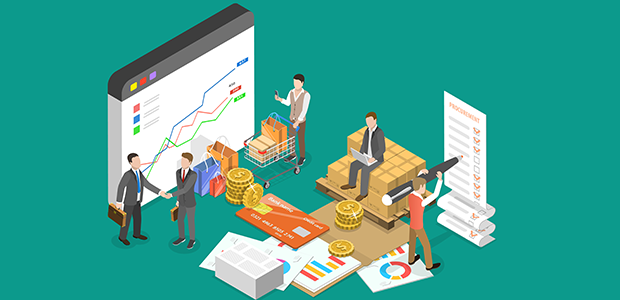
Procurement’s Role as Protector of Profit
Despite the UK's headline inflation rate decreasing from 11% in 2021 to 2% in June 2024, businesses are not resting easy. In a recent survey by consulting firm The Hackett Group, procurement leaders identified inflationary pressures on profit margins as a major concern for 2024. For startups, protection against market volatility is critical to ensuring longevity and growth.
In simple terms, there are only two ways for business to enhance margins – by boosting sales or by optimising procurement strategies to achieve smart cost savings. Today, attitudes towards the procurement function and understanding of its purpose are changing and developing as businesses seek out every advantage in turbulent times.
Changing procurement perceptions
Traditionally, procurement has been viewed as a cost centre within organisations, a department or role with the emphasis largely on controlling and minimising expenses, rather than contributing to revenue generation or strategic value creation. However, the perception of procurement is gradually shifting. The procurement function now sits at a key juncture for effective collaboration between buyers, suppliers, and with internal or external partners. By optimising supply chains, fostering innovation through supplier collaboration, managing risks, and ensuring sustainability, procurement can play a crucial role in enhancing business performance beyond mere cost savings, driving efficiencies and protecting profit margins.
Procurement's evolution from cost centre to a strategic function involves a deeper integration with other departments. For example, by working closely with R&D and product development teams, procurement can help source innovative materials and technologies, thereby enabling new product development and market differentiation. This collaborative approach also extends to corporate social responsibility (CSR) initiatives, where procurement's role in ensuring sustainable and ethical supply chains becomes increasingly important. As companies face growing scrutiny from consumers and stakeholders, the ability to demonstrate a commitment to ethical sourcing and sustainability can also become a competitive advantage.
Digital transformation of the procurement function
Technology is helping drive procurement’s value-add. Specifically, digital AI tools are revolutionising procurement by enabling more data-driven, proactive, and strategic approaches. These innovative tools are suitable for large enterprises aiming to digitise their procurement processes on a unified platform, as well as for smaller startups exploring these benefits for the first time.
Automation in the procurement function can lead to substantial savings and efficiencies across multiple areas. Procurement processes can be streamlined, reducing the time and manual input required for tasks like purchase order management, invoice processing, and vendor communications. This leads to significant reductions in administrative and operational costs. Automated systems also minimise human errors in data entry, contract management, and order processing. Fewer errors mean less time and money spent on corrections and rework.
Automation enables better data analysis and reporting, allowing organisations to cherry-pick and consolidate suppliers, achieve economies of scale and eliminate maverick spending. Approval processes for tasks like purchase orders and invoice approvals can be streamlined, leading to faster delivery times and potentially better cash flow management through optimised payment terms. Any issues or discrepancies can be quickly flagged, allowing for prompt resolution and minimising disruptions to supply chains.
As organisations grow, automation can easily scale to handle increased transaction volumes without the need for proportional increases in staffing. AI-based tools can quickly adapt to changes in market conditions, such as fluctuations in demand or supply chain disruptions, ensuring continuity and competitiveness.
Advantages like risk management and cost avoidance won't show up on the balance sheet but these "soft savings" are essential in the fight against inflationary pressures and the drive to continued business health and growth.
Protecting profits
Inflationary pressure on profit margins remains a key concern for businesses, and every advantage is being sought to protect the bottom-line. From being viewed historically as a cost-centre, the procurement function is emerging as a critical strategic cog, driven by automated AI-based intelligence. Businesses investing in this technology are unearthing savings, driving efficiencies and stealing a march on more manual-reliant competitors.
The strategic role of procurement extends to risk management and cost avoidance, which, although not always visible on the balance sheet, are essential in the fight against inflationary pressures and the drive to sustained business health and growth. For instance, procurement can mitigate risks associated with supplier reliability, geopolitical instability, and commodity price volatility by diversifying the supplier base and locking in favourable contract terms. These proactive measures help ensure business continuity and protect profit margins from unforeseen disruptions, as businesses navigate the challenges of a fluctuating economic landscape.

